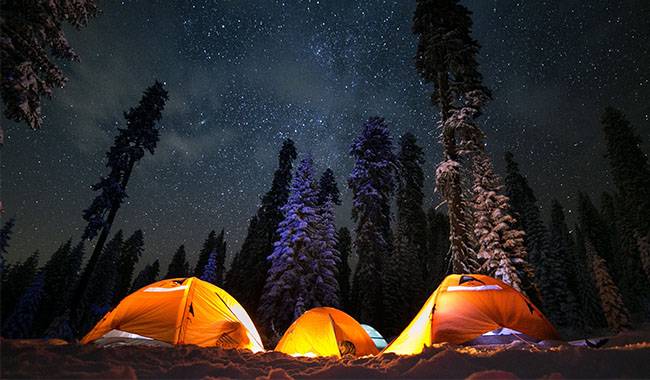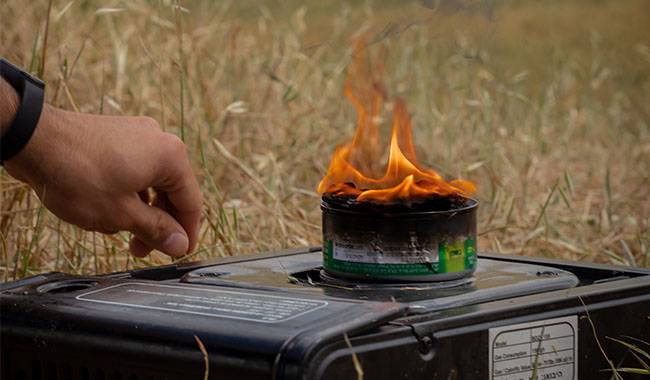
When it’s cold, hiking is no fun. During the day, it’s all good: warm under the pack, hot in the sun, even in freezing temperatures. But at night in your tent, the cold makes it hard to sleep, and you shiver, curl up in a ball and count the minutes until dawn. But there are some tried-and-true tips to keep you warm in your tent and get a good night’s sleep even when it’s freezing outside. Here’s how to prepare for the cold ahead of time, and what to do if you go camping in the summer and end up in the snow. You will learn more about How to Keep Warm in a Tent through the LCN Outdoors article.
Be Prepared For The Cold
If you go camping in the winter or off-season, be prepared for the cold by choosing the right equipment. The right outfit means the right outfit for the conditions. Do your research on the weather in the area, especially the nighttime temperatures. If you’re going to the mountains, be sure to take into account the altitude – that way you won’t wonder why there’s snow in the south in September. Then choose your clothing and equipment.
A. Choose the right sleeping bag and pad
This is the first and most important rule; if you follow it, you won’t need to read any further. Sleeping bags and pads should be suitable for hiking conditions, and if the hike should take place during the unpredictable off-season, it is best to bring more.
The comfortable temperature of your sleeping bag should be 41-50 °F (5-10°C) lower than the expected temperature in the camping area. In other words, if you are going to the lower mountains in the fall and expect a light frost, bring a sleeping bag that is resistant to 19-14 °F (-7 to -10°C). The frost-resistant one can be guided by the lower comfort temperature, and the frost-resistant one can only be guided by the higher temperature.
In formats, the comfort temperature is indicated by the R-value, the higher the value the better. Thin foam mats are not suitable for temperatures below 32 °F (0°C) and will freeze quickly. For winter and off-season hiking, thick foam pads or 4-season self-inflating pads are worth bringing: they provide good insulation and comfort.
Tip: Don’t choose your sleeping bag by temperature extremes. This is the temperature at which you won’t die. But you probably won’t fall asleep either.
B. Use a warm liner
If, for some reason, there is no warm sleeping bag, then take your stuff with you plus a sleeping bag liner. They come in thin, cotton or silk, or warm, wool or other synthetic insulators. The former is for hygienic reasons, to prevent dirty socks from soiling the sleeping bag. On the other hand, a thermal liner can significantly increase the comfort temperature due to the material and the extra air space between the liner and the sleeping bag.
C. Get a catalytic heater
A catalytic heater is a must for winter and cold camping. It is a compact heater that can warm your hands, feet, or any other part of your body, dry your boots or gloves, and most importantly, raise the temperature of your sleeping bag all night long. It is fueled by gasoline and is very safe because there is no open flame and a special protective insulation cover prevents you from getting burned.
How it works is simple: you fill the heater with fuel, light the wick, turn it off, and put it in your sleeping bag. It heats up for anywhere from a few hours to a few days, depending on the model and the amount of fuel. You can fill it with gasoline popular with tourists, such as refined gasoline for lighters.
D. Make a pair of two sleeping bags
A double sleeping bag is two sleeping bags that are folded together. They should preferably be the same model with two zippers on the left and right, although sometimes it is even possible to sew different brands of sleeping bags together – the main thing is to check if this is possible before the hike. For couples who always plan to go on winter hikes together, you can buy a double sleeping bag and solve the cold problem completely and save weight.
If You Suddenly Catch A Cold

As it happens, you’re on a summer camping trip and there’s a sudden frost in the mountains – and there’s no forecast to know about it. All you have is a summer sleeping bag and a thin blanket. You have to improvise and use what you have.
A. Warm-up before bed
Don’t go to bed cold or you won’t get warm soon (or at all). A sleeping bag doesn’t keep you warm, it just keeps you warm, so it’s important to have more warmth. Try to warm up in any way you can before you get into your sleeping bag. If there is a fire, warm up properly, if not, do some exercises outside (jumping, squatting) and drink hot tea in your tent (you can drink it in your sleeping bag, but be careful not to spill it).
B. Wear your clothes to bed
Some people think it is warmer to sleep in a sleeping bag without clothes. This issue is vague, it really depends on the comfortable temperature of the sleeping bag and the temperature outside. If it’s cold to sleep in a pair of thermal underwear, you should insulate yourself. Something as big as a down jacket is best left on and thrown on instead. If you toss and turn a lot in your sleep, put your jacket inside your sleeping bag, otherwise, it may slip off and you’ll have to unzip and readjust. Put on wool or down socks, a wool sweater, long pants, and a hat. For example, let your legs be wrapped in a buttoned-up wool jacket.
C. Keep your head warm
Usually, everyone insulates their legs but forgets about their head. However, heat can escape from your head – sometimes you just need a hat or a hood and a warm collar to keep you warm. For the cold: If you have a lot of warm clothes, don’t wear them all, but keep your head and neck warm, for example by wrapping them in a fleece or down jacket. This will also prevent heat loss from the sleeping bag.
D. Isolating the sleeping bag from the cold ground
If frost comes suddenly and you only have thin foam, put what you don’t wear under the pad. Put a backpack under your feet, spare clothes on your back, and a seat under your waist (or you can take the seats with warm pads from your friends and use them as a second rug). If you have ropes – that would be great, climbers don’t need any cushions to sleep on them, so you can do it too. It will be uncomfortable, but very warm. As a last resort, put a few layers of folded sleeping blankets on your back – it’s not as effective as a regular thermal pad, but it’s better than nothing.
E. Make a bottle warmer
If you do not have a catalytic heating pad, you can put a temporary catalytic heating pad in your sleeping bag – made of plastic bottles or flasks. Warm water is poured into a container and placed in the sleeping bag. If you don’t save fuel, you can make two of these warmers: one for your feet and the other for cuddling. You can always take the flask away from those who are not cold or hot. It will keep you warm for a few hours, and then you’d better take it out – sleeping with cold water in your arms is not very comfortable.
Tip: Don’t pour boiling water into a plastic flask, or you’ll have to throw it away later. Just don’t boil the water, or cool it down a bit if you’re not careful.
F. Try not to leave the tent
Every time you go out, it cools you and your tent down, especially when the entrance is upwind. You go out and all your efforts to warm up are in vain. So try not to leave your tent without an important reason. Before going to bed, drink less tea, and if you do like to pee, use an airtight container such as a wide-mouth plastic bottle. Just in case, there are also special devices for girls. There is no time for rituals.
If you do have to go out, remember to warm up, do at least a dozen sit-ups and warm up in your sleeping bag.
G. Eat a little more food
Hiking is not the time to go on a diet. Calories are directly related to staying warm, not extra pounds. When camping in cold conditions, it is best to bring high-calorie foods rich in fat and carbohydrates. For example, peanut butter, chocolate, nuts, pemmican …… Some foods freeze in the cold, making it impossible for you to chew (for example, chocolate bars containing peanuts), so plan your snacks carefully. Ghee, on the other hand, comes in very handy in the winter: it doesn’t drip or melt. Hot soup with ghee is a perfect example of a proper dinner on a cold night.
Eat as much hot food as possible, because cold food needs your body’s energy to warm it up. It should be the other way around: the food warms you, not you warming the food.
Is It Possible To Heat The Tent With A Burner

All tent and burner manufacturers explicitly prohibit this, but campers do it anyway. We don’t recommend it either, but you won’t listen anyway, so here’s how to do it as safely as possible.
- Open all ventilation windows: it’s easy to get burned (or suffocate from condensation) in an unventilated tent.
- Keep a close eye on the flames and never sleep with the stove on!
- Use only tested and partially used gas cylinders (new and untested cylinders often “explode”).
- Remember: the tent will burn down in less than 1 minute.
Fireproof backpacking stoves are the most attractive gas burners for heating – there is no open flame, the flame is covered by a porous ceramic “lid” and gas consumption is minimal. But it is these burners that produce the most carbon monoxide, which can be deadly. In fact, the situation is not that bad: Experienced climbers conducted a study by measuring carbon monoxide levels in tents with working “reactors”. The conclusion was that a burner without a pot produces almost no CO, which means it can be safely kept warm and dry. The main thing to remember is to ventilate the tent. However, this does waste heat, so this method makes little sense.
Therefore, the best way to stay warm in your tent overnight is to choose the right equipment. Your sleeping bag and pad should be suitable for camping conditions, then you won’t need to mess around with bottles or fiddle with burners. But if frost suddenly sets in and you have a summer sleeping bag, you know what to do.
Go camping, choose the right equipment, and stay warm!”.